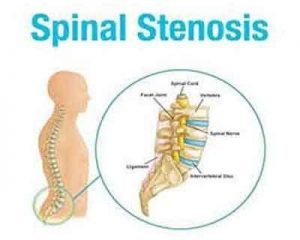- Home
- Editorial
- News
- Practice Guidelines
- Anesthesiology Guidelines
- Cancer Guidelines
- Cardiac Sciences Guidelines
- Critical Care Guidelines
- Dentistry Guidelines
- Dermatology Guidelines
- Diabetes and Endo Guidelines
- Diagnostics Guidelines
- ENT Guidelines
- Featured Practice Guidelines
- Gastroenterology Guidelines
- Geriatrics Guidelines
- Medicine Guidelines
- Nephrology Guidelines
- Neurosciences Guidelines
- Obs and Gynae Guidelines
- Ophthalmology Guidelines
- Orthopaedics Guidelines
- Paediatrics Guidelines
- Psychiatry Guidelines
- Pulmonology Guidelines
- Radiology Guidelines
- Surgery Guidelines
- Urology Guidelines
Genetic clues to spinal stenosis

A new study published in the Journal of Orthopaedic Research indicates that certain genetic changes are linked with an increased risk of developing lumbar spinal stenosis, a narrowing of the open spaces in the lower spine that can lead to pain in the legs when individuals walk.
The results from the study, which included 469 individuals, provide insights into the potential causes of spinal stenosis. "Our study represents a tremendous leap forward in our understanding of the condition," said senior author Dr. Dino Samartzis. "With a better understanding of the condition and the identification of genetic markers, individuals who are at increased risk can be identified early and preventative measures can be initiated. The information may also help investigators develop more novel and precision-based management options for affected patients."
Lead author Dr. Jason Cheung added, "We finally have a clearer understanding regarding the genetic and developmental background of spinal canal narrowing. The bony spinal canal diameter is a unique phenotype that should not be mistaken for a canal measurement at the level of the disc, where it is highly influenced by disc degeneration features."
For more details click on the link : Jason Pui Yin Cheung, Patrick YP Kao, Pak Sham, Kathryn SE Cheah, Danny Chan, Kenneth MC Cheung, Dino Samartzis. Etiology of Developmental Spinal Stenosis: a Genome-Wide Association Study. Journal of Orthopaedic Research, 2017; DOI: 10.1002/jor.23746

Disclaimer: This site is primarily intended for healthcare professionals. Any content/information on this website does not replace the advice of medical and/or health professionals and should not be construed as medical/diagnostic advice/endorsement or prescription. Use of this site is subject to our terms of use, privacy policy, advertisement policy. © 2020 Minerva Medical Treatment Pvt Ltd